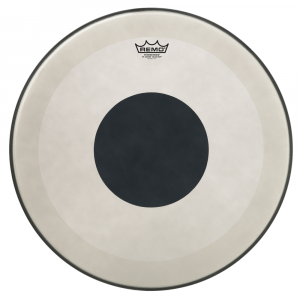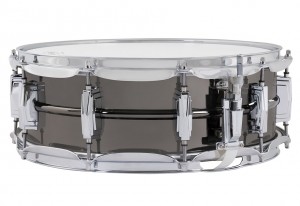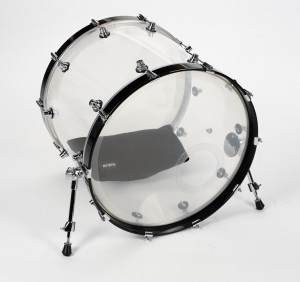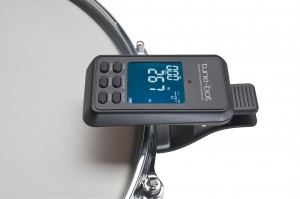What You Need to Know About…<br>Drum Tuning
This article originally ran in the Jan/Feb 2013 issue of Drum Business.
by Ben Meyer
My snare just doesn’t have the “crack” I want, and my toms don’t sound like they do on the radio. How do I tune these things, anyway? You’ve probably said something like that to yourself at some point over the years. Never fear—we’ve got some tuning tips to make your life a bit easier. For this piece we consulted renowned drum tuning guru and Modern Drummer Pro Panelist Bob Gatzen for some gems on the subject. A good first step, he says, is to “Get your ears together and practice tonality. Play a secondary instrument [such as piano, vibraphone, marimba, or guitar]. If money is an issue, pick up a melodica. It’s an inexpensive, mobile tonal instrument.”
Let’s address some of the elements of drum tuning that you need to know.
Head Selection
Loads of heads are available these days, but there are some general axioms that can assist in helping you choose the best models for your musical purposes. There’s a certain amount of experimentation that drummers need to do in order to find “their” sound. If you’re not sure where to start, make a list of your favorite drummers, and look up what heads they use.
Let’s first examine a few generalities of head selection for snare drums. Most drummers use coated batter (playing-side) heads on snare drums, for a few reasons. Coated heads provide the textured surface necessary for brush playing and help to temper some of the wild overtones that snare drums can produce. Most drummers use single-ply coated batter heads, though some prefer double-ply models. There are many innovative heads designed for snare drums, including pre-muffled ones. These heads feature additional or partial plies to help dampen some of the overtones that can prove challenging to control with snare drums. Advertisement
 Bass drum head choices are somewhat limited to models in common sizes. Introduced over the past twenty years, pre-muffled heads designed specifically for drumset use have taken some of the individuality out of bass drum sounds, but they’re an easy go-to.
Bass drum head choices are somewhat limited to models in common sizes. Introduced over the past twenty years, pre-muffled heads designed specifically for drumset use have taken some of the individuality out of bass drum sounds, but they’re an easy go-to.
For toms, there are tons of choices, but generally rock and funk players like the punch and attack of clear batter heads, while jazz, folk, world, and some rock drummers prefer the warmth and fatness of coated batters. Heavy hitters will find more durability in 2-ply models, and quieter players tend to appreciate the added dynamic sensitivity of 1-ply heads.
If you’re looking for heads for non-drumset instruments, like timpani, concert toms and bass drums, or marching drums, there is a host of options designed specifically for them, though some general models are also usable. Each major head manufacturer offers timpani, concert bass drum, and marching-percussion heads. It’s perfectly rational for a band director or drum-line instructor who’s not sure what he or she needs to choose a manufacturer and get its full line of marching snare, multi-tenor, and bass drum heads. Concert toms can be outfitted with a variety of general-use heads, though single-ply coated or clear models are used most commonly. Advertisement
Batter Versus Resonant
The general rule on the relationship between top and bottom heads on a given drum (or front and batter heads for bass drums) is to use thicker models on the batter side and thinner (usually clear) models for the resonant side. Snare and bass drum resonant heads are specially designed for these roles. Each company makes corresponding batter and resonant versions of its bass drum models, so these are easily matched.
Head Seating
This is an important step in preparing new drumheads to be properly tuned. The conventional wisdom here is to uniformly tighten the head past the point at which you intend to play it and then let it stretch so it can conform to the drum’s bearing edge. Be careful not to go overboard, though, as you can break heads by overtightening them. Seating the heads properly first helps you to quickly and effectively “clear the head”—even out the overtones—once you start tuning it.
Head Clearing
This is the most challenging and crucial element of drum tuning. Bob Gatzen’s advice of learning a pitched instrument is a great way to develop the ability to differentiate pitches from one another. The key to clearing a head is to match the pitch at each lug, in order to eliminate wobbling overtones. Once you’ve matched the lugs, you can adjust each until you reach the desired overall pitch. Advertisement

A good place to start is to detune all the lugs (after the head has been seated), finger-tighten each tension rod, and then begin tuning in half-turn drum-key increments in a crossing pattern like you would use on lug nuts when changing a car tire. With the drum on the floor or your lap, tap the head with your finger near the edge in front of the lugs, to compare the pitch of the overtone produced at each. Adjust rods that seem higher or lower than average until the pitch is the same all the way around the drum. You should notice that the wobbling overtones start to disappear as you even out the tension. The goal is to hear one pure, ringing pitch. Repeat this process for both heads, and then adjust all the lugs by the same amount to make overall pitch changes.
Give It a Whack
Sometimes you’ll see more experienced drum tuners use a drastic technique of smacking the head in the center to help quicken the tuning process. The metal hoop that the Mylar material of the head attaches to, known as the flesh hoop, can become trapped between the shell and the rim. So sometimes when you detune a lug, the pitch of the head might not actually go down. By giving the head a good, solid whack with your fist frequently while clearing the head, you can prevent this from happening. The technique also helps stretch and seat new drumheads. Just don’t use it on snare-side heads, as they’re easy to break.
Pitch Relationships Between Heads
Opinions differ on this subject, but most drummers either tune the batter and resonant heads to the same pitch, or they have the bottom head of the toms and snare a bit tighter or looser than the batter. Ideas include tuning the snare batter head a minor third or a perfect fourth above the resonant, and tuning resonant tom heads a whole step higher than the batter heads. Experiment and see what works for you, your customers, and the drums. Advertisement
Gatzen says, “Here’s how I check out a new snare drum. Step 1: Pitch the resonant and batter head to the same note. ‘A’ is a good choice. Step 2: With the resonant head set on A, tension the batter head upward in half-step increments (A to Bb to B to C, etc.). Play the drum at each setting to experience the pitch, rhythm, and sound of the drum changing as the head increases in tension. Step 3: Reverse the process by detuning the batter head in the same fashion.”
Muffling
 Some players use gaffer’s tape to muffle drums, while others use less-permanent products such as Moongel or muffling rings. This is largely determined by personal preference, but every room poses different muffling challenges. Experimentation is the key here, but encourage your customers to check out what their drumming heroes do for muffling. In most cases, less muffling is better for live situations, while in the studio you can go as far as to tape up the entire head for a fat, thuddy ’70s rock sound.
Some players use gaffer’s tape to muffle drums, while others use less-permanent products such as Moongel or muffling rings. This is largely determined by personal preference, but every room poses different muffling challenges. Experimentation is the key here, but encourage your customers to check out what their drumming heroes do for muffling. In most cases, less muffling is better for live situations, while in the studio you can go as far as to tape up the entire head for a fat, thuddy ’70s rock sound.
Maintenance
How often you need to tune your drums is largely determined by how often they’re played and how hard they’re hit. I give each drum a whack when I first take it out of the case, and if it sounds good in the room, I let it be. But there’s usually one drum that sounds a bit off, for whatever reason, so I’ll quickly check each lug tuning, make adjustments to ones that are out of tune, and then decide if the overall pitch needs to go up or down to bring out the best tone for that room. Advertisement
Drumhead Life Span
Heads should last for several months under normal playing conditions. If your customers are breaking or denting heads often, suggest that they change to a heavier model. As heads wear, they stretch out and become dull and dead sounding, even if they don’t show any visible dents.
Tuning Aids
 There are several tuning aids on the market, including a few different models of tension gauges and the digital Tune-bot. These devices aid in clearing the head by providing a diagnostic method of evening the pitch or tension at each lug, so they can help make the process more exact. They are not, however, a substitute for learning to differentiate pitches, as Gatzen points out. “But as far as gear goes, every drummer should own a metronome/tuner,” he says.
There are several tuning aids on the market, including a few different models of tension gauges and the digital Tune-bot. These devices aid in clearing the head by providing a diagnostic method of evening the pitch or tension at each lug, so they can help make the process more exact. They are not, however, a substitute for learning to differentiate pitches, as Gatzen points out. “But as far as gear goes, every drummer should own a metronome/tuner,” he says.
Learning to tune your drums for their various musical adventures is a long process, but one that we all must experience. Gatzen says, “First and foremost, develop your style. The connection between musical style and personal style is like a fine-tuned recipe. Ask Emeril Lagasse!” For more info, check out Bob’s many YouTube videos on tuning, as well as his DVD Drum Tuning: Sound and Design.
Advertisement
And be sure to check out our other What You Need to Know About features here.


